4-羟基苯甲酸异丁酯,Isobutyl 4-hydroxybenzoate,97%
产品编号:Sigma-715077| CAS NO:4247-02-3| MDL NO:MFCD00020167| 分子式:C11H14O3| 分子量:194.23
Isobutylparaben (Isobutyl 4-hydroxybenzoate) 是组成型雄烷受体 (CAR) 激活剂。Isobutylparaben 具有广谱抗菌 (antimicrobial) 活性,并广泛用于个人护理产品和化妆品中。
本网站销售的所有产品仅用于工业应用或者科学研究等非医疗目的,不可用于人类或动物的临床诊断或者治疗,非药用,非食用,
| 产品名称 | 4-羟基苯甲酸异丁酯 | ||||||||||||||||
|---|---|---|---|---|---|---|---|---|---|---|---|---|---|---|---|---|---|
| 英文名称 | Isobutyl 4-hydroxybenzoate | ||||||||||||||||
| CAS编号 | 4247-02-3 | ||||||||||||||||
| 产品描述 | Isobutylparaben (Isobutyl 4-hydroxybenzoate) 是组成型雄烷受体 (CAR) 激活剂。Isobutylparaben 具有广谱抗菌 (antimicrobial) 活性,并广泛用于个人护理产品和化妆品中。 | ||||||||||||||||
| 产品熔点 | 76°C | ||||||||||||||||
| 产品沸点 | 302.3±15.0 °C at 760 mmHg | ||||||||||||||||
| 产品密度 | 1.1±0.1 g/cm3 | ||||||||||||||||
| 产品闪点 | 125.4±13.2 °C | ||||||||||||||||
| 精确质量 | 194.094299 | ||||||||||||||||
| PSA | 46.53000 | ||||||||||||||||
| LogP | 3.28 | ||||||||||||||||
| 外观性状 | 白色奶油色 | ||||||||||||||||
| 蒸气压 | 0.0±0.7 mmHg at 25°C | ||||||||||||||||
| 折射率 | 1.524 | ||||||||||||||||
| 溶解性 | 可溶于:甲醇 | ||||||||||||||||
| 溶解性数据 | In Vitro:
DMSO : 100 mg/mL (514.85 mM; Need ultrasonic) 配制储备液
*
请根据产品在不同溶剂中的溶解度选择合适的溶剂配制储备液;一旦配成溶液,请分装保存,避免反复冻融造成的产品失效。 In Vivo:
请根据您的实验动物和给药方式选择适当的溶解方案。以下溶解方案都请先按照 In Vitro 方式配制澄清的储备液,再依次添加助溶剂:
——为保证实验结果的可靠性,澄清的储备液可以根据储存条件,适当保存;体内实验的工作液,建议您现用现配,当天使用;
以下溶剂前显示的百
| ||||||||||||||||
| 稳定性 | 常温常压下稳定,无色细小晶体或白色结晶性粉末。无臭。难溶于水(0.035g/100ml,25℃)。易溶于乙醇、冰醋酸、丙二醇和丙酮。 | ||||||||||||||||
| 储存条件 | 避光,通风干燥处,密封保存 |
相关文档
化学品安全说明书(MSDS)
下载MSDS质检证书(COA)
相关产品
| 符号 |

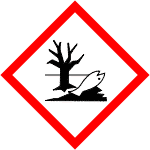
GHS07, GHS09 |
|---|---|
| 信号词 | Warning |
| 危害声明 | H315-H319-H411 |
| 警示性声明 | P305 + P351 + P338 |
| 危害码 (欧洲) | Xn: Harmful; |
| 风险声明 (欧洲) | 51/53 |
| 安全声明 (欧洲) | S22-S24/25 |
| 危险品运输编码 | UN 3077 9/PG 3 |
| RTECS号 | DH2247000 |
| 海关编码 | 2918290000 |
|
Section I.Chemical Product and Company Identification Chemical Name Isobutyl 4-Hydroxybenzoate Portland OR Synonym4-Hydroxybenzoic Acid Isobutyl Ester; Isobutylparaben Chemical FormulaC11H14O3 CAS Number4247-02-3
Section II.Composition and Information on Ingredients Toxicology Data Chemical NameCAS Number Percent (%)TLV/PEL Min. 99.0 (T) Not available.Not available. Isobutyl 4-Hydroxybenzoate4247-02-3 Section III. Hazards Identification Acute Health EffectsIrritating to eyes and skin on contact. Inhalation causes irritation of the lungs and respiratory system. Inflammation of the eye is characterized by redness, watering, and itching. Skin inflammation is characterized by itching, scaling, reddening, or, occasionally, blistering. Skin contact may result in sensitization. Always cover all exposed skin with an impermeable layer and use proper eye protection. A OSHA/MSHA approved dust and vapor respirator is required when working with this material. Follow safe industrial hygiene practices and always wear proper protective equipment when handling this compound. Chronic Health EffectsCARCINOGENIC EFFECTS : Not available. MUTAGENIC EFFECTS : Not available. TERATOGENIC EFFECTS : Not available. DEVELOPMENTAL TOXICITY: Not available. Repeated or prolonged exposure to this compound is not known to aggravate existing medical conditions. Section IV.First Aid Measures Check for and remove any contact lenses. In case of contact, immediately flush eyes with plenty of water for at least 15 Eye Contact minutes. Get medical attention. In case of contact, immediately flush skin with plenty of water. Remove contaminated clothing and shoes. Wash clothing Skin Contact before reuse. Thoroughly clean shoes before reuse. Get medical attention. InhalationIf the victim is not breathing, perform mouth-to-mouth resuscitation. Loosen tight clothing such as a collar, tie, belt or waistband. If breathing is difficult, oxygen can be administered. Seek medical attention if respiration problems do not improve. IngestionINDUCE VOMITING by sticking finger in throat. Lower the head so that the vomit will not reenter the mouth and throat. Loosen tight clothing such as a collar, tie, belt or waistband. If the victim is not breathing, perform mouth-to-mouth resuscitation. Examine the lips and mouth to ascertain whether the tissues are damaged, a possible indication that the toxic material was ingested; the absence of such signs, however, is not conclusive. Section V.Fire and Explosion Data Not available. May be combustible at high temperature.Auto-Ignition Flammability Flammable LimitsNot available. Flash PointsNot available. Combustion ProductsThese products are toxic carbon oxides (CO, CO2). Fire Hazards Not available. Risks of explosion of the product in presence of mechanical impact: Not available. Explosion Hazards Risks of explosion of the product in presence of static discharge: Not available. Fire Fighting Media SMALL FIRE: Use DRY chemical powder. LARGE FIRE: Use water spray, fog or foam. DO NOT use water jet. and Instructions Consult with local fire authorities before attempting large scale fire-fighting operations. Continued on Next Page Isobutyl 4-Hydroxybenzoate Section VI.Accidental Release Measures Spill CleanupIrritating material. Skin sensitizing material. Use a shovel to put the material into a convenient waste disposal container. Consult federal, state, and/or local authorities for Instructions assistance on disposal. Section VII. Handling and Storage Handling and StorageIRRITANT. SKIN SENSITIZER. Keep away from heat. Mechanical exhaust required. When not in use, tightly seal the container and store in a dry, cool place. Avoid excessive heat and light. Do not breathe dust. Information Section VIII. Exposure Controls/Personal Protection Use process enclosures, local exhaust ventilation, or other engineering controls to keep airborne levels below recommended Engineering Controls exposure limits. If user operations generate dust, fume or mist, use ventilation to keep exposure to airborne contaminants below the exposure limit. Splash goggles. Lab coat. Dust respirator. Boots. Gloves. Suggested protective clothing might not be sufficient; consult a Personal Protection specialist BEFORE handling this product. Be sure to use a MSHA/NIOSH approved respirator or equivalent. Exposure LimitsNot available. Section IX. Physical and Chemical Properties Physical state @ 20°CSolid. (Crystal, powder. Whtie - almostSolubility Soluble in methanol; white.) Very soluble in ethanol, ether, acetone; Very slightly soluble in water. Not available. Specific Gravity Molecular Weight194.23Partition CoefficientLOG Pow: 3.11 Boiling PointNot available.Vapor PressureNot applicable. Melting Point76°C (168.8°F)Vapor DensityNot available. Not available.Not available. Refractive IndexVolatility Critical TemperatureNot available.OdorNot available. Not available.Not available. ViscosityTaste Section X.Stability and Reactivity Data Stability This material is stable if stored under proper conditions. (See Section VII for instructions) Conditions of InstabilityAvoid excessive heat and light. IncompatibilitiesReactive with strong oxidizing agents. Section XI. Toxicological Information RTECS NumberDH2247000 Eye Contact. Ingestion. Inhalation. Routes of Exposure Not available. Toxicity Data CARCINOGENIC EFFECTS : Not available. Chronic Toxic Effects MUTAGENIC EFFECTS : Not available. TERATOGENIC EFFECTS : Not available. DEVELOPMENTAL TOXICITY: Not available. Repeated or prolonged exposure to this compound is not known to aggravate existing medical conditions. Irritating to eyes and skin on contact. Inhalation causes irritation of the lungs and respiratory system. Inflammation of the eye Acute Toxic Effects is characterized by redness, watering, and itching. Skin inflammation is characterized by itching, scaling, reddening, or, occasionally, blistering. Skin contact may result in sensitization. Always cover all exposed skin with an impermeable layer and use proper eye protection. A OSHA/MSHA approved dust and vapor respirator is required when working with this material. Follow safe industrial hygiene practices and always wear proper protective equipment when handling this compound. Section XII.Ecological Information Not available. Ecotoxicity Environmental FateNot available. Continued on Next Page Isobutyl 4-Hydroxybenzoate Section XIII. Disposal Considerations Waste DisposalRecycle to process, if possible. Consult your local regional authorities. You may be able to dissolve or mix material with a combustible solvent and burn in a chemical incinerator equipped with an afterburner and scrubber system. Observe all federal, state and local regulations when disposing of the substance. Section XIV. Transport Information Not a DOT controlled material (United States). DOT Classification PIN NumberNot applicable. Proper Shipping NameNot applicable. Packing Group (PG)Not applicable. DOT Pictograms Section XV. Other Regulatory Information and Pictograms TSCA Chemical InventoryThis product is NOT on the EPA Toxic Substances Control Act (TSCA) inventory. The following notices are required by 40 CFR 720.36 (C) for those products not on the inventory list: (EPA) (i) These products are supplied solely for use in research and development by or under the supervision of a technically qualified individual as defined in 40 CFR 720.0 et sec. (ii) The health risks of these products have not been fully determined. Any information that is or becomes available will be supplied on an MSDS sheet. WHMIS ClassificationOn DSL. (Canada) EINECS Number (EEC) 224-208-8 EEC Risk StatementsR36/37/38- Irritating to eyes, respiratory system and skin. R43- May cause sensitization by skin contact. SECTION 16 - ADDITIONAL INFORMATION N/A |
| 上游产品 2 | |
|---|---|
| 下游产品 4 | |

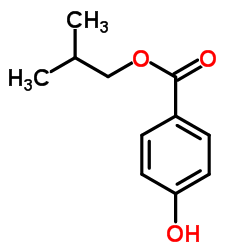
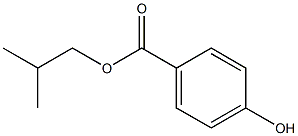


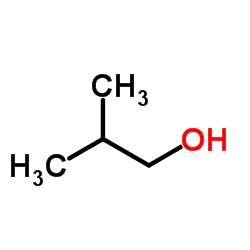
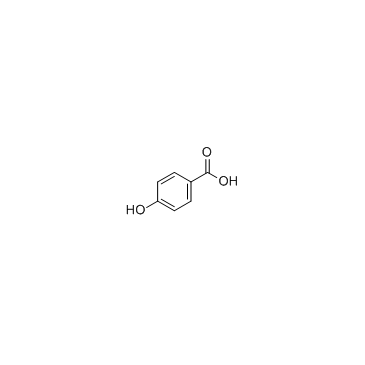
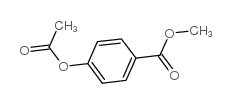
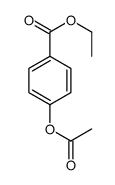
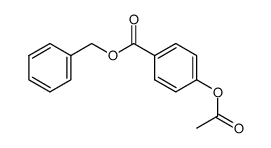
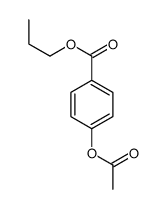





 浙公网安备 33010802013016号
浙公网安备 33010802013016号